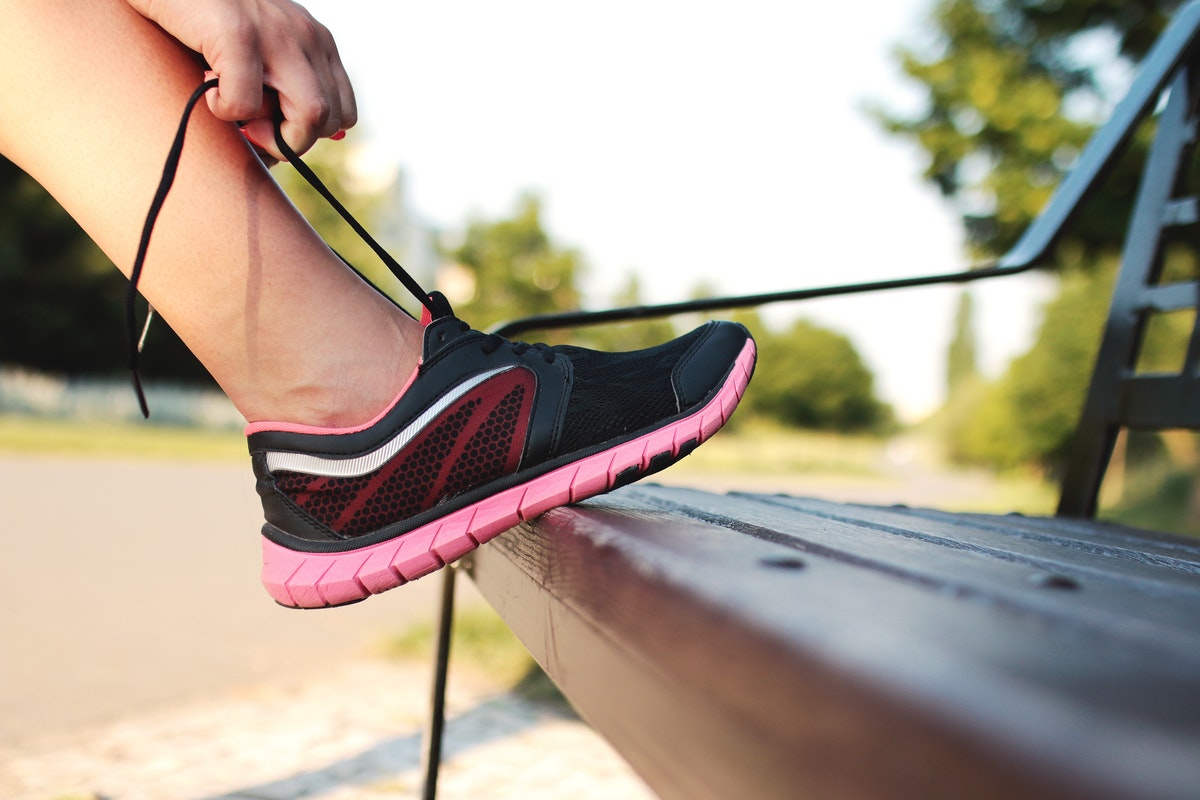
The right pair of shoes is guaranteed to help you prevent injuries from occurring while exercising. Wearing the right pair of shoes could make the difference between a smooth workout and a debilitating injury. While finding the perfect exercise shoe may seem like a difficult task, keeping these general tips in mind makes the process much easier. Here’s a list of the most important factors to look for in your exercise shoes.
Shock Absorption
When you run, your foot can hit the ground with the force of 2.5 times your body weight. In order to keep your joints healthy, it’s vital to wear shoes with proper shock absorption. Most running shoes are designed with rubber or foam cushioning. While this cushioning helps absorb shock, it’s important that the cushioning doesn’t interfere with your running form. Additionally, you need to replace your shoes after about 400 miles of usage because their ability to absorb shock gradually wears out over time.
Traction
You must be careful to balance the amount of traction your shoes provide with your need to move. If you buy shoes with too much traction, you increase your chances of being injured because you lose the ability to maneuver past obstacles quickly. If you have too little traction, then you are more likely to slip, fall, and lose the ability to make sudden stops safely. Consider the amount of available traction as your foot moves throughout each step to arrive at your best option.
Ankle Support
Ankle support is essential when looking for exercise shoes as it reduces the risk of ankle strain and injury. This feature hugs your ankle, keeping it in place and preventing your tendons from being stressed. It’s important to note how tightly the ankle support on your shoes hug the ankle, for if they’re too tight they could cause painful blisters.
Arch Support
There are three primary types of pronation, the natural motion of your foot when walking or running. Your pronation type will determine how your weight is distributed among your arch as you run. Here, we will discuss the three types of pronation, how you can determine your type, and the best shoe design for you.
To start, take a look at the sole of your most worn running shoe.
- Under Pronation: If the outside of your sole shows the most wear, then you are an under-pronator, distributing your weight to the exterior of your foot as you make your strides. Shoes designed for under-pronators have extra cushioning to ensure running form is as natural as possible.
- Over Pronation: Alternatively, if the inner part of the sole shows a lot more wear than the rest of the shoe, you are an overpronator. This means that your ankle rolls too far downward and inward with each stride taken. Shoes for over-pronators have extra support in the sole and heel to provide adequate stability.
- Neutral Pronation: If the soles of your shoe show even wear throughout, you’re a neutral pronator. All you need to look for is a comfortable shoe with stability.
While it is essential to choose the right shoes when exercising, accidents can still happen. When you need to see an orthopedic surgeon in Lake Mary, consider Central Florida Bone & Joint Institute. A visit to common emergency rooms typically take many hours. At our clinic, we usually dismiss patients in under 60 minutes. You pay only your regular office copay, instead of the higher fee that is often associated with other orthopedic surgeons in Lake Mary.